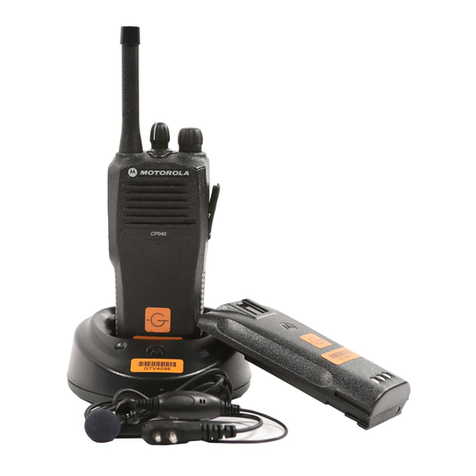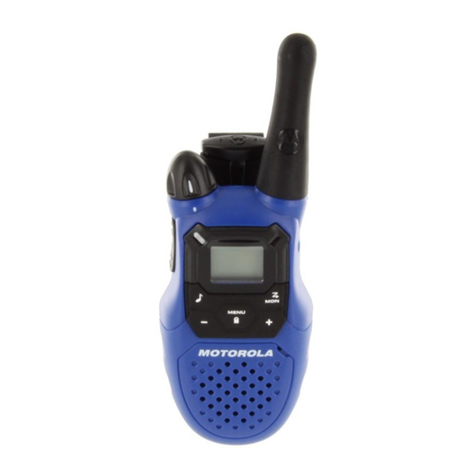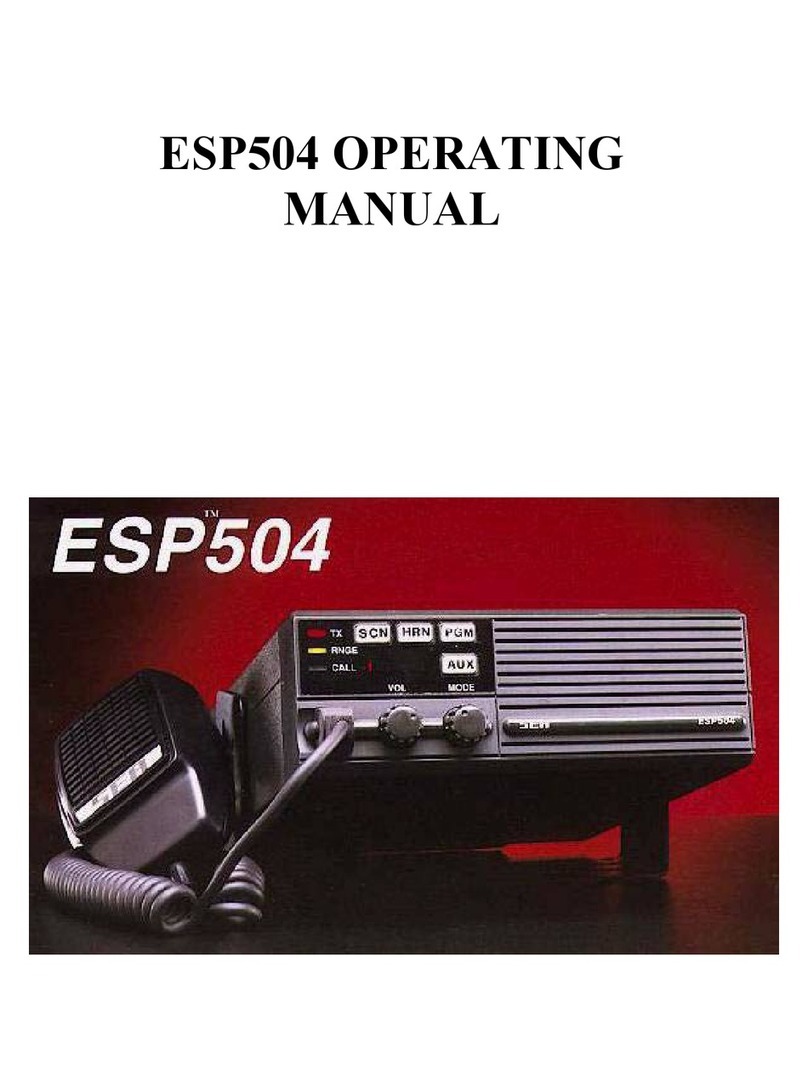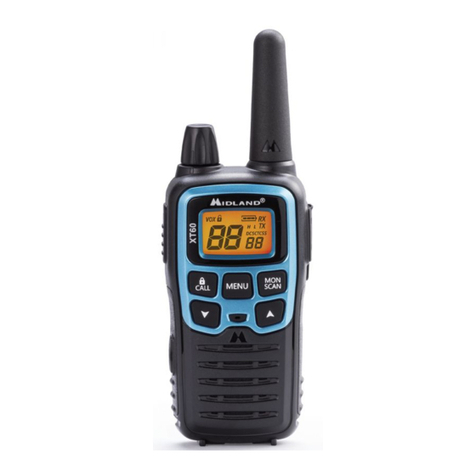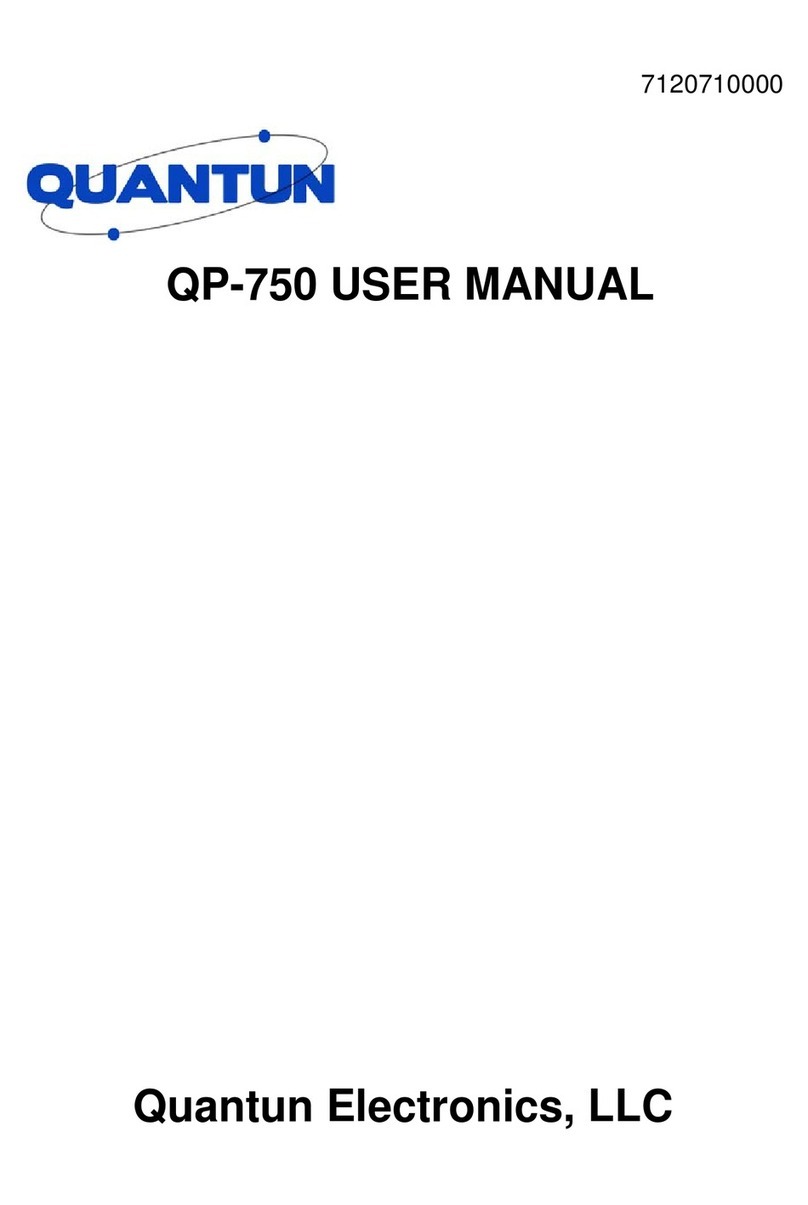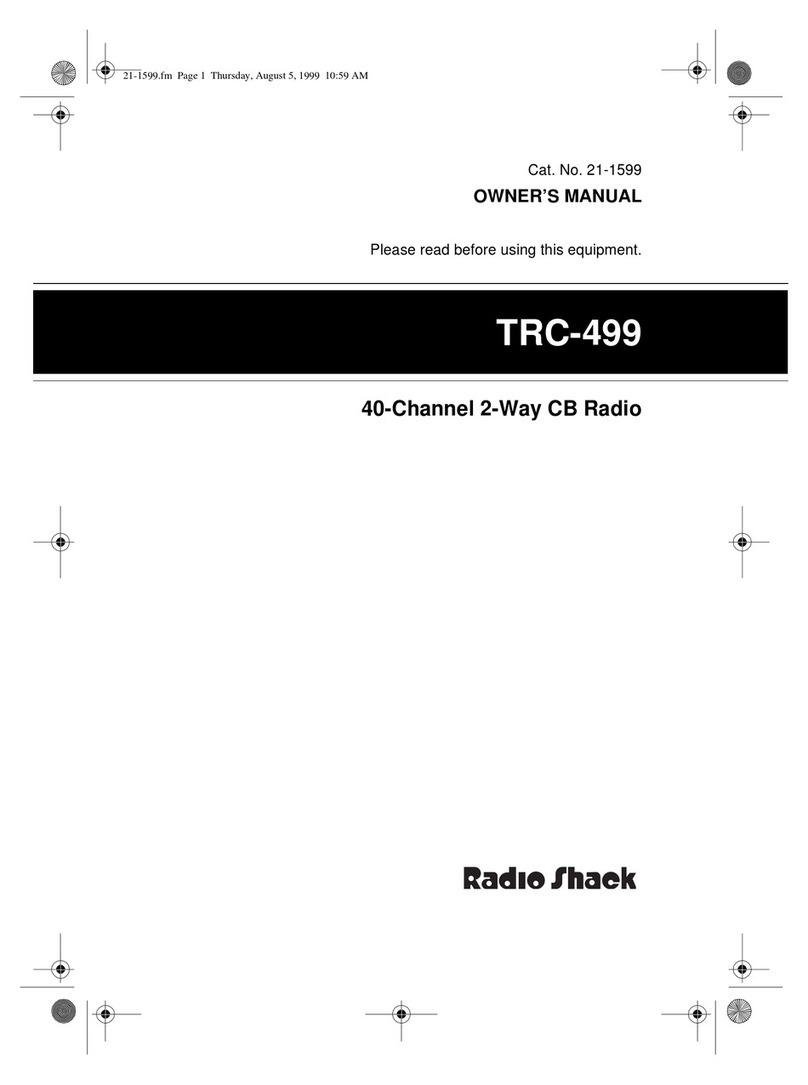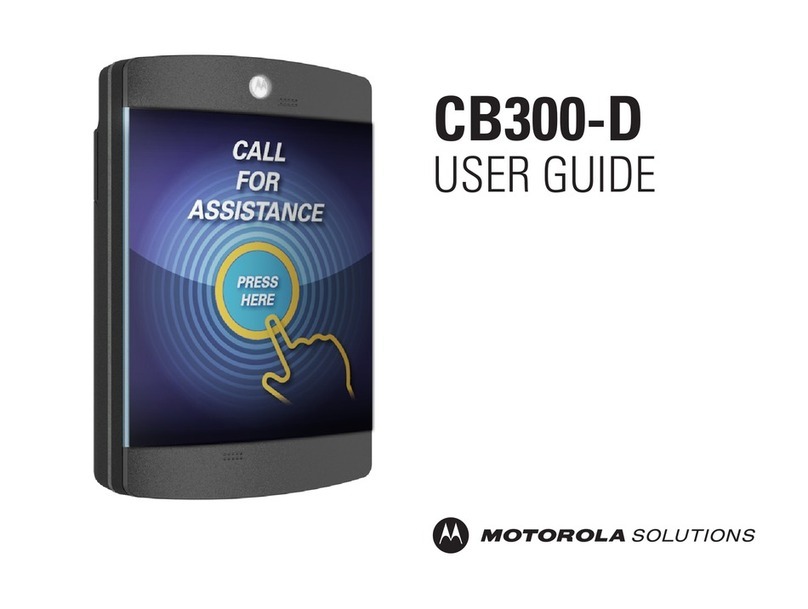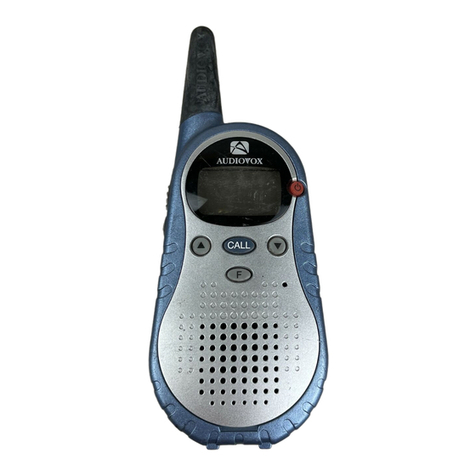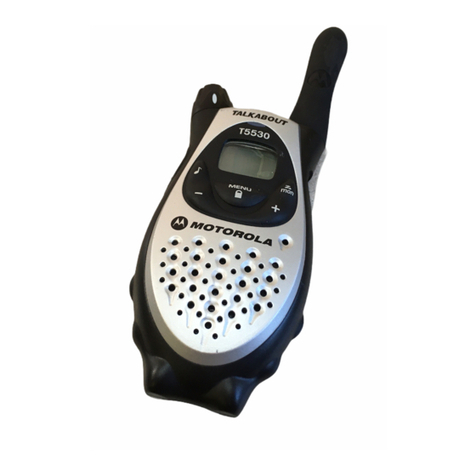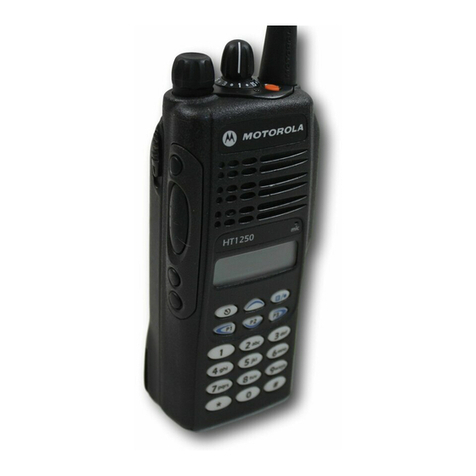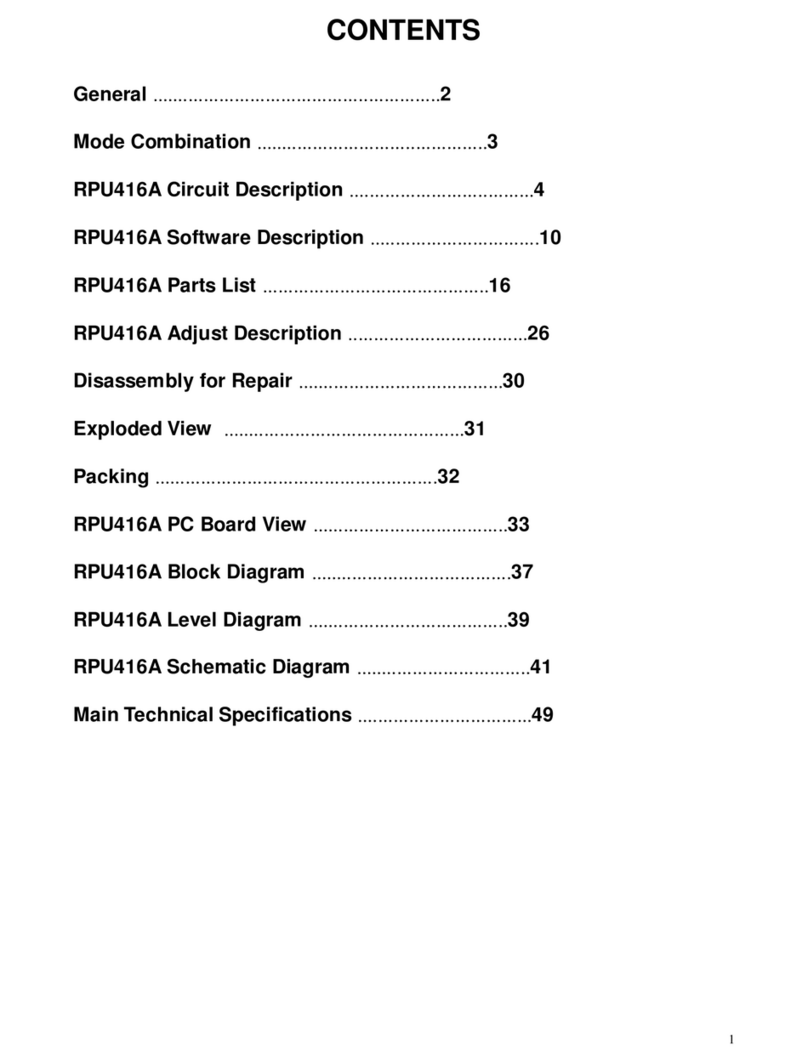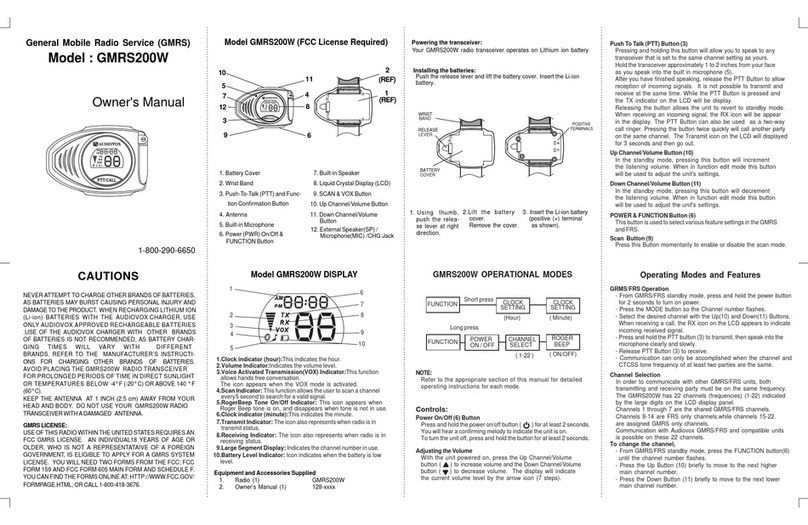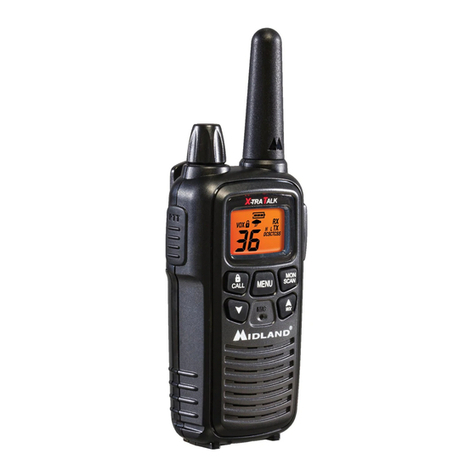Simoco SRM9020 User manual

SRM9020 Mobile Radio
MPT1327 - Trunked
Operating Instructions
Software Version: V2.62
T M-U-E-0012 Issue 2a
January 2010
SRM 9020 SRM 9020 SRM 9020 SRM 9020 SRM 9020 SRM 9020 SRM 9020
SRM 9020 SRM 9020 SRM 9020 SRM 9020 SRM 9020 SRM 9020 SRM 902
SRM 9020 SRM 9020 SRM 9020 SRM 9020 SRM 9020 SRM 9020 SRM
SRM 9020 SRM 9020 SRM 9020 SRM 9020 SRM 9020 SRM 9020 S
SRM 9020 SRM 9020 SRM 9020 SRM 9020 SRM 9020 SRM 902
SRM 9020 SRM 9020 SRM 9020 SRM 9020 SRM 9020 SRM
SRM 9020 SRM 9020 SRM 9020 SRM 9020 SRM 9020 S
SRM 9020 SRM 9020 SRM 9020 SRM 9020 SRM 902
SRM 9020 SRM 9020 SRM 9020 SRM 9020 SRM
M 9020
9020 SRM 9020
SRM 9020 SRM 9020
RM 9020 SRM 9020 SRM 9020
9020 SRM 9020 SRM 9020 SRM 9020
M 9020
020 SRM 9020
SRM 9020 SRM 9020
RM 9020 SRM 9020 SRM 9020
M 9020 SRM 9020 SRM 9020 SRM 9020
9020 SRM 9020 SRM 9020 SRM 9020 SRM 9020
9020 SRM 9020 SRM 9020 SRM 9020 SRM 9020 SRM 9020
020 SRM 9020 SRM 9020 SRM 9020 SRM 9020 SRM 9020 SRM 9020
SRM 9020 SRM 9020 SRM 9020 SRM 9020 SRM 9020 SRM 9020 SRM 9020
SRM 9020 SRM 9020 SRM 9020 SRM 9020 SRM 9020 SRM 9020 SRM 9020
SRM 9020 SRM 9020 SRM 9020 SRM 9020 SRM 9020 SRM 9020 SRM 9020
SRM 9020 SRM 9020 SRM 9020 SRM 9020 SRM 9020 SRM 9020 SRM 9020
SRM 9020 SRM 9020 SRM 9020 SRM 9020 SRM 9020 SRM 9020 SRM 9020
SRM 9020 SRM 9020 SRM 9020 SRM 9020 SRM 9020 SRM 9020 SRM 9020
SRM 9020 SRM 9020 SRM 9020 SRM 9020 SRM 9020 SRM 9020 SRM 9020
SRM 9020 SRM 9020 SRM 9020 SRM 9020 SRM 9020 SRM 9020 SRM 9020
SRM 9020 SRM 9020 SRM 9020 SRM 9020 SRM 9020 SRM 9020 SRM 9020
SRM 9020 SRM 9020 SRM 9020 SRM 9020 SRM 9020 SRM 9020 SRM 9020
SRM 9020 SRM 9020 SRM 9020 S
SRM 9020 SRM 9020 SRM 9020
SRM 9020 SRM 9020 SRM
SRM 9020 SRM 9020 S
SRM 9020 SRM 9
SRM 9020
S
SRM 9020 SRM 9020 SRM 9020 SRM 9020 SRM 9020 SRM 9020 SRM 9020
SRM 9020 SRM 9020 SRM 9020 SRM 9020 SRM 9020 SRM 9020 SRM
SRM 9020 SRM 9020 SRM 9020 SRM 9020 SRM 9020 SRM 9
SRM 9020 SRM 9020 SRM 9020 SRM 9020 SRM 90
SRM 9020 SRM 9020 SRM 9020 SRM 9020
SRM 9020 SRM 9020 SRM 9020
SRM 9020 SRM 9020
SRM 9020
M 9020 SRM 9020 SRM 9020 SRM 9020
SRM 9020 SRM 9020 SRM 9020 SRM 9020
20 SRM 9020 SRM 9020 SRM 9020 SRM 9020
9020 SRM 9020 SRM 9020 SRM 9020 SRM 9020
SRM 9020 SRM 9020 SRM 9020 SRM 9020 SRM 9020
20 SRM 9020 SRM 9020 SRM 9020 SRM 9020 SRM 9020
9020 SRM 9020 SRM 9020 SRM 9020 SRM 9020 SRM 9020
RM 9020 SRM 9020 SRM 9020 SRM 9020 SRM 9020 SRM 9020
SRM 9020 SRM 9020 SRM 9020 SRM 9020 SRM 9020 SRM 90
RM 9020
0SRM 9020
9020 SRM 9020
RM 9020 SRM 9020
0SRM 9020 SRM 9020
9020 SRM 9020 SRM 9020
RM 9020 SRM 9020 SRM 9020
SRM 9020 SRM 9020 SRM 9020
020 SRM 9020 SRM 9020 SRM 9020
9020 SRM 9020 SRM 9020 SRM 9020 SRM 9020 S
M 9020 SRM 9020 SRM 9020 SR
SRM 9020 SRM 9020
020 SRM 902
902
M 9020 SRM 9020 SRM 9020 SRM 9020
020 SRM 9020 SRM 9020 SRM 9020 SRM 9020 S
SRM 9020 SRM 9020 SRM 9020
SRM 9020 SRM 9020
9020
SRM 9020 SRM 9020
SRM 9020 SRM 9020 SRM 9020 SRM 9020 SRM 9
SRM 9020 SRM 9020 SRM 9020 SRM 9020 S
SRM 9020 SRM 9020 SRM 9020 SRM 90
SRM 9020 SRM 9020 SRM 9020 SR
SRM 9020 SRM 9020 SRM 9020
SRM 9020 SRM 9020 SRM 9020 SRM 9020 S
SRM 9020 SRM 9020 SRM 9020 SRM 902
SRM 9020 SRM 9020 SRM 9020 SRM
On/Off
SRM9020
M F
S
Abcde
abcde
Comgroup Australia Pty. Ltd.
1270 erntree Gully Road
Scoresby
Victoria, 3179
Australia

SRM9020 ~ Trunked Operating Instructions
© Comgroup Australia 2010 i T M-U-E-0012 Issue 2a
ASSOCIATED DOCUME TATIO
The following documentation is available for use with the SRM9000 series of
products:
TNM-I-E-0005 SRM9000 Series Installation Instructions
TNM-M-E-0001 SRM9000 Service Manual
TNM-U-E-0003 SRM9030 PMR Operating Instructions
TNM-U-E-0004 SRM9030 Trunked Operating Instructions
TNM-U-E-0013 SRM9020 PMR Operating Instructions
TNM-U-E-0014 SRM9025 PMR Operating Instructions
TNM-U-E-0015 SRM9025 Trunked Operating Instructions
To order copies of any of the above publications, or any other Simoco product,
contact Comgroup Australia on +61 3 9730 3800 or send a ax on +61 3 9730
3968.
ABOUT THIS DOCUME T
This publication is copyright and no part may be reproduced without prior
permission of Comgroup Australia.
Due to our policy of continuous improvement to our products and services,
technical specifications and claims, correct at time of publication, may be subject
to variation without prior notice.
Comgroup Australia has endeavoured to ensure that the information in this
document is fairly and accurately stated, but does not accept liability for any
errors or omissions.

SRM9020 ~ Trunked Operating Instructions
T M-U-E-0012 Issue 2 ii © TMC Radio 2002
DOCUME T BASED ICO S
The following icons are used in this document to describe certain actions of the
screen display:
This icon indicates that the first screen is only displayed momentarily and
then the second screen is displayed.
This icon indicates that the screens shown are each displayed
momentarily in sequence.
SAFETY
1. Do OT operate your radio, without a handsfree kit, whilst driving a
vehicle.
2. Do OT operate your radio in an explosive atmosphere.
Obey the 'Turn Off Two-way Radios' signs where these are posted,
e.g. on a petrol station forecourt.
3. Do OT touch the antenna while the radio is transmitting.
4. Do OT operate the radio if the antenna has become disconnected
or damaged.
HI TS FOR USI G THE RADIO
• When speaking, hold the microphone a few centimetres from your mouth and
speak across it, rather than into it.
• Keep the length of your conversation to a minimum and replace the
microphone on it’s cradle after use.
• When it is possible to move location, avoid making calls from known poor
signal-strength areas such as the radio systems fringe areas (limit of range)
or from screened or shadowed areas, e.g. an underground car park or
underpass.
• To avoid unnecessary drain on the vehicle battery, keep the engine running
when using the radio for extensive periods of time.

SRM9020 ~ Trunked Operating Instructions
© Comgroup Australia 2010 iii T M-U-E-0012 Issue 2a
CO TE TS
ASSOCIATED DOCUME TATIO ............................................................ I
ABOUT THIS DOCUME T......................................................................... I
DOCUME T BASED ICO S..................................................................... II
SAFETY ..................................................................................................... II
HI TS FOR USI G THE RADIO............................................................... II
CO TE TS .............................................................................................. III
1. I TRODUCTIO .............................................................................. 1
1.1 Installation.................................................................................. 1
2. MICROPHO E FEATURES............................................................. 2
3. FU CTIO S..................................................................................... 3
3.1 Display and Icons ...................................................................... 3
3.2 Switch-On/Switch-Off ................................................................ 4
3.3 In-Service Indication.................................................................. 5
3.4 Volume Adjustment ................................................................... 5
4. CALL TYPES ................................................................................... 6
4.1 Basic Steps in a Voice call........................................................ 7
4.2 Placing a Voice Call................................................................... 7
4.2.1 Completeing a Voice Call Connection................................ 8
4.2.2 Terminating a Voice Call .................................................... 8
4.3 Receiving a Call ......................................................................... 9
4.3.1 Receiving a Voice Call ....................................................... 9
4.3.2 Receiving a Group Voice Call .......................................... 10
4.4 Making a Status Call................................................................ 11
4.4.1 Incoming Status Messages .............................................. 11
4.5 Call Diversion........................................................................... 12
4.5.1 To Cancel a Diversion...................................................... 12
4.6 External alert ............................................................................ 12
5. ME U SYSTEM ............................................................................. 13
5.1 Phonebook Screen .................................................................. 14
5.2 Recall Screen ........................................................................... 14

SRM9020 ~ Trunked Operating Instructions
T M-U-E-0012 Issue 2 iv © TMC Radio 2002
5.3 Stored Calls Screen................................................................. 15
5.4 Status Screen........................................................................... 16
5.5 Alert Volume............................................................................. 16
5.6 etwork..................................................................................... 17
5.7 Information ............................................................................... 17
6. OPTIO S ....................................................................................... 18
6.1 Quick Release Transceiver Kit ............................................... 18
6.2 Microphone/Control Head Extension Lead ........................... 18
6.3 VOX Handsfree Option ............................................................ 18
6.4 Type 1 Parallel I/O Expansion Option .................................... 18
6.5 Internal GPS Option................................................................. 18
6.6 Cross-linked Cable .................................................................. 18
6.7 600 Ohm Interface Option ....................................................... 18
6.8 Desk Top Base Kit ................................................................... 18
7. TROUBLESHOOTI G ................................................................... 19
APPE DIX A - ALERT TO ES ............................................................... 20
APPE DIX B - CALL PROGRESS MESSAGES .................................... 21
APPE DIX C - GLOSSARY .................................................................... 22

SRM9020 ~ Trunked Operating Instructions
© Comgroup Australia 2010 Page 1 T M-U-E-0012 Issue 2a
1. I TRODUCTIO
The SRM9000 Series Radios are advanced, versatile, Digital Signal Processor
(DSP) controlled, two-way mobile radios. The SRM9000 Series is available in a
number of frequency bands and versions for specific applications. This manual
describes the operation of the SRM9020 Trunked Alphanumeric Display variant.
The radio consists of a SRM9000 Transceiver Unit that may be mounted local or
remote, and a SRM9020 Alphanumeric Microphone which is designed to mount
within view and reach of the driver. A speaker connected to the radio provides
the audio interface.
The radio is software programmable and it can be customised to the operational
requirements of your particular fleet. Your Simoco representative can help in
programming your radio’s facilities to meet your present and future requirements.
This guide describes the operation of the SRM9020 facilities.
1.1 I
STALLATIO
As the installation of your SRM9020 Radio is a technical and possibly hazardous
operation, we recommend that it is installed and set up for use by your dealer or
an authorised installer. However, if you need information regarding the correct
procedures for installation, please refer to the SRM9000 Series Installation
Instructions supplied with the radio.

SRM9020 ~ Trunked Operating Instructions
T M-U-E-0012 Issue 2a Page 2 © Comgroup Australia 2010
SRM 9020 SRM 9020 SRM 9020 SRM 9020 SRM 9020 SRM 9020 SRM 9020
SRM 9020 SRM 9020 SRM 9020 SRM 9020 SRM 9020 SRM 9020 SRM 902
SRM 9020 SRM 9020 SRM 9020 SRM 9020 SRM 9020 SRM 9020 SRM
SRM 9020 SRM 9020 SRM 9020 SRM 9020 SRM 9020 SRM 9020 S
SRM 9020 SRM 9020 SRM 9020 SRM 9020 SRM 9020 SRM 902
SRM 9020 SRM 9020 SRM 9020 SRM 9020 SRM 9020 SRM
SRM 9020 SRM 9020 SRM 9020 SRM 9020 SRM 9020 S
SRM 9020 SRM 9020 SRM 9020 SRM 9020 SRM 902
SRM 9020 SRM 9020 SRM 9020 SRM 9020 SRM
M 9020
9020 SRM 9020
SRM 9020 SRM 9020
RM 9020 SRM 9020 SRM 9020
9020 SRM 9020 SRM 9020 SRM 9020
M 9020
020 SRM 9020
SRM 9020 SRM 9020
RM 9020 SRM 9020 SRM 9020
M 9020 SRM 9020 SRM 9020 SRM 9020
9020 SRM 9020 SRM 9020 SRM 9020 SRM 9020
9020 SRM 9020 SRM 9020 SRM 9020 SRM 9020 SRM 9020
020 SRM 9020 SRM 9020 SRM 9020 SRM 9020 SRM 9020 SRM 9020
SRM 9020 SRM 9020 SRM 9020 SRM 9020 SRM 9020 SRM 9020 SRM 9020
SRM 9020 SRM 9020 SRM 9020 SRM 9020 SRM 9020 SRM 9020 SRM 9020
SRM 9020 SRM 9020 SRM 9020 SRM 9020 SRM 9020 SRM 9020 SRM 9020
SRM 9020 SRM 9020 SRM 9020 SRM 9020 SRM 9020 SRM 9020 SRM 9020
SRM 9020 SRM 9020 SRM 9020 SRM 9020 SRM 9020 SRM 9020 SRM 9020
SRM 9020 SRM 9020 SRM 9020 SRM 9020 SRM 9020 SRM 9020 SRM 9020
SRM 9020 SRM 9020 SRM 9020 SRM 9020 SRM 9020 SRM 9020 SRM 9020
SRM 9020 SRM 9020 SRM 9020 SRM 9020 SRM 9020 SRM 9020 SRM 9020
SRM 9020 SRM 9020 SRM 9020 SRM 9020 SRM 9020 SRM 9020 SRM 9020
SRM 9020 SRM 9020 SRM 9020 SRM 9020 SRM 9020 SRM 9020 SRM 9020
SRM 9020 SRM 9020 SRM 9020 S
SRM 9020 SRM 9020 SRM 9020
SRM 9020 SRM 9020 SRM
SRM 9020 SRM 9020 S
SRM 9020 SRM 9
SRM 9020
S
SRM 9020 SRM 9020 SRM 9020 SRM 9020 SRM 9020 SRM 9020 SRM 9020
SRM 9020 SRM 9020 SRM 9020 SRM 9020 SRM 9020 SRM 9020 SRM
SRM 9020 SRM 9020 SRM 9020 SRM 9020 SRM 9020 SRM 9
SRM 9020 SRM 9020 SRM 9020 SRM 9020 SRM 90
SRM 9020 SRM 9020 SRM 9020 SRM 9020
SRM 9020 SRM 9020 SRM 9020
SRM 9020 SRM 9020
SRM 9020
M 9020 SRM 9020 SRM 9020 SRM 9020
SRM 9020 SRM 9020 SRM 9020 SRM 9020
20 SRM 9020 SRM 9020 SRM 9020 SRM 9020
9020 SRM 9020 SRM 9020 SRM 9020 SRM 9020
SRM 9020 SRM 9020 SRM 9020 SRM 9020 SRM 9020
20 SRM 9020 SRM 9020 SRM 9020 SRM 9020 SRM 9020
9020 SRM 9020 SRM 9020 SRM 9020 SRM 9020 SRM 9020
RM 9020 SRM 9020 SRM 9020 SRM 9020 SRM 9020 SRM 9020
SRM 9020 SRM 9020 SRM 9020 SRM 9020 SRM 9020 SRM 90
RM 9020
0SRM 9020
9020 SRM 9020
RM 9020 SRM 9020
0SRM 9020 SRM 9020
9020 SRM 9020 SRM 9020
RM 9020 SRM 9020 SRM 9020
SRM 9020 SRM 9020 SRM 9020
020 SRM 9020 SRM 9020 SRM 9020
9020 SRM 9020 SRM 9020 SRM 9020 SRM 9020 S
M 9020 SRM 9020 SRM 9020 SR
SRM 9020 SRM 9020
020 SRM 902
902
M 9020 SRM 9020 SRM 9020 SRM 9020
020 SRM 9020 SRM 9020 SRM 9020 SRM 9020 S
SRM 9020 SRM 9020 SRM 9020
SRM 9020 SRM 9020
9020
SRM 9020 SRM 9020
SRM 9020 SRM 9020 SRM 9020 SRM 9020 SRM 9
SRM 9020 SRM 9020 SRM 9020 SRM 9020 S
SRM 9020 SRM 9020 SRM 9020 SRM 90
SRM 9020 SRM 9020 SRM 9020 SR
SRM 9020 SRM 9020 SRM 9020
SRM 9020 SRM 9020 SRM 9020 SRM 9020 S
SRM 9020 SRM 9020 SRM 9020 SRM 902
SRM 9020 SRM 9020 SRM 9020 SRM
On/Off
SRM9020
M F
S
Abcde
2. MICROPHO E FEATURES
BUTTO /
CO TROL
FU CTIO
On/Off Push and hold for 1 second to switch the radio On
or Off.
PTT/Pressel
Press-to-Talk switch.
M (Menu) F1
Move between Menu Screens.
F2
Used to End a Call.
F F3
Undefined.
S (Select)
F4
Used to make a call to the displayed identity.
Scroll up and down through a list within a Menu.
The four programmable buttons, 1 to 4, can be programmed, using the PP
Programmer, to perform different functions. If the default settings, described
above, are changed, alternative means should be provided to perform their
original functions.
Microphone
PTT/Pressel
Special unction ( 3)
Menu Selection ( 1)
End ( 2)
Select ( 4)
Power On/Off
Volume Up
Volume Down
Alphanumeric
Display
Scroll Up
Scroll Down

SRM9020 ~ Trunked Operating Instructions
© Comgroup Australia 2010 Page 3 T M-U-E-0012 Issue 2a
3. FU CTIO S
3.1 D
ISPLAY A D
I
CO S
The display shows text information relevant to the
selected Menu Screen. In the default (Phonebook)
Menu the display shows a name (or number) and
an Icon character.
Icon characters may be:
ICO S
Calling The Call is in progress and audio is enabled at the
loudspeaker.
Setup Call setup in progress (this icon is animated).
Transmit This symbol indicates that the radio is transmitting.
Search The rotating bar icon indicates that the radio is
searching for a network channel. The symbol
disappears when the radio has registered with the
Trunk Network.
Stored
Calls
When not transmitting or receiving, to indicate
stored calls.
Other menus use the full six characters to display information.
When a Menu is selected (using the
M
button) the Menu Name will briefly flash
on the display before being replaced by the first entry in the Menu list.

SRM9020 ~ Trunked Operating Instructions
T M-U-E-0012 Issue 2a Page 4 © Comgroup Australia 2010
3.2 S
WITCH
-O
/S
WITCH
-O
FF
Press and hold down the On/Off button for
approximately 2 seconds to switch the radio ON.
The display will illuminate and briefly show an
'Opening Message’ (arranged by your dealer) and the
Trunk Identity of the radio.
After a brief time the display will revert to the
Phonebook Screen, at which time the radio is ready
for use.
Press and hold down the On/Off button for
approximately 2 seconds to switch the radio Off.
If the radio Inactivity Timer is enabled, the radio will automatically turn Off after a
pre-defined period of inactivity (i.e. no buttons pressed). The radio will emit
warning beeps for 10 seconds prior to switching off. Pressing any button will
reset this timer.
The radio can also be set up to switch on automatically with the Vehicle Ignition
whenever the vehicle is started.
On/Off
SRM9020
On/Off

SRM9020 ~ Trunked Operating Instructions
© Comgroup Australia 2010 Page 5 T M-U-E-0012 Issue 2a
3.3 I
-S
ERVICE
I
DICATIO
After switch on the radio must 'Register' with the
Trunking Network before it can place or receive calls.
When the radio is searching for the control channel a
rotating bar icon is displayed. When the radio has
registered, the rotating bar icon will disappear.
The radio is said to be In-Service when it is in contact
with the Network.
You cannot make a call until the radio is In-Service.
3.4 V
OLUME
A
DJUSTME T
The Volume Up/Down buttons set the
speech level at the loudspeaker.
Use the Up/Down buttons to set the volume
of the received signal to the required level.
When there is no signal a beep will be emitted at each button press to indicate
the volume level. During a call the beeps are omitted.
Note: The radio may be programmed so that the volume cannot be turned
off completely.
Volume
Up
Volume
Down
SRM9020
On/Off

SRM9020 ~ Trunked Operating Instructions
T M-U-E-0012 Issue 2a Page 6 © Comgroup Australia 2010
4. CALL TYPES
The Trunking System allows the user to make a number of different types of call.
The SRM9020 supports most of the call types that can be accessed through the
Trunk Network, including.
• Voice calls between Individuals or Groups
• Include Calls
• Status Calls
• Priority and Emergency Calls
• Diversion Calls
• Broadcast Calls.
Individual Calls. Allow private conversations between two users. Other users
can be included in the call using an Include Call.
Group Calls. Allow different members of a group to participate in a group
conversation. Any participant in the group can leave the call individually, but only
the originator can end the call.
Status Calls. Allow a status number to be sent between users. The SRM9020
allows text messages to be associated with up to 30 status numbers and can
display these text messages when such a status is to be sent or is received.
Diversion Calls. Allow the user to divert incoming calls to another radio,
telephone, etc. Additionally the SRM9020 can call radios that are similarly
diverted. or example, when away from their vehicle, a user can divert calls to
the depot radio.
ormal, Priority and Emergency Calls. If the channel is busy, Normal calls are
placed in a queue and actioned when they reach the top of the queue. Priority
calls jump to the top of the queue unless a previous priority call is taking place.
Emergency calls are actioned immediately.
Broadcast Calls. Are similar to Group calls except that only the initiator of the call
can speak to the other parties in the call.
Notes 1: Some of these call types are only available after prior arrangement
with the Network Operator.
2: ost Trunk Networks have a time limit placed on call duration. The
Network terminates the call after this time.

SRM9020 ~ Trunked Operating Instructions
© Comgroup Australia 2010 Page 7 T M-U-E-0012 Issue 2a
4.1 B
ASIC
S
TEPS I A
V
OICE CALL
The following basic steps need to be performed to achieve a voice call:
• User selects call recipient.
• Network allocates a channel, (may be a small delay).
• User and recipient take turns to speak.
• User or, for individual calls, the recipient ends the call and releases the
channel.
4.2 P
LACI G A
V
OICE
C
ALL
Group or Individual Voice Calls may be made in any one of the following ways:
Using the Phonebook :
rom the Phonebook Screen, scroll through the
entries using the buttons until the desired
name is shown; then press the
S
button, e.g. JohnS.
Using a Direct-Call Function Button :
Any one of the programmable function buttons ( 1 to 4) may be assigned as a
Direct-Call button. Pressing this button will place a call to the pre-programmed
destination e.g. JohnS.
Using the Recall Facility :
Any one of the last eight calls made, may be recalled and redialled using this
facility, refer to Section 5.3 for additional information.
Note: If the called radio is not contactable (radio off, out of range or all
channels are busy) or does not answer within a short period of time
(dependant on the Network - about 10-30 seconds) a Radio usy or
Unavailable message is displayed and call-fail tones are emitted.
When all channels are busy, the call is placed in a queue and the
display shows Q_ED.

SRM9020 ~ Trunked Operating Instructions
T M-U-E-0012 Issue 2a Page 8 © Comgroup Australia 2010
4.2.1 Completeing a Voice Call Connection
When the called radio is contacted, both radios will
produce a ring tone and the Alert message together
with the call progress icon will be displayed.
When the called person answers, refer to Section 4.3
for information on how to accept a call, both radios
will be connected. The Call Time-Elapsed and audio
enabled icon is displayed.
A conversation can now take place between operators. Each operator must press
and hold down their PTT button to speak and then release it to listen.
4.2.2 Terminating a Voice Call
When the call is finished, either operator can end the call by:
•
Replacing the microphone on it’s bracket, or
•
Pressing the button.

SRM9020 ~ Trunked Operating Instructions
© Comgroup Australia 2010 Page 9 T M-U-E-0012 Issue 2a
4.3 R
ECEIVI G A
C
ALL
The SRM9020 will respond to incoming calls according to the type of call being
received.
4.3.1 Receiving a Voice Call
When a call is received the radio will ring and display
the caller’s name or ID number and the animated
Call Progress icon.
While the radio is ringing, the user can answer the call by:
- Pressing and releasing the PTT button.
- Removing the Microphone from its bracket.
- Pressing the
S
button.
When the call is answered the handset will
momentarily display the message Q-ED (QueuED)
followed by the Elapsed Call Time (Min-Sec) and the
Audio Enabled icon.
A conversation can now take place by each operator, in turn, pressing their PTT
buttons to speak and releasing them to listen.
When the call is finished, either operator can end the call by:
- replacing the Microphone on its bracket, or
- pressing the button.
If a ringing call is un-answered because the Network times out, or the caller
cancels the call, details of the call are saved in the Stored Calls Screen.
Note1: The SR 9020 responds in the same manner as above for Priority
and Emergency calls.
Note 2: Some Trunking Networks provide a different Call-Set-Up method
which allows the radios to automatically answer incoming Voice
Calls.

SRM9020 ~ Trunked Operating Instructions
T M-U-E-0012 Issue 2a Page 10 © Comgroup Australia 2010
4.3.2 Receiving a Group Voice Call
A Group Voice Call differs from an individual call in that the operators do not need
to answer the ring tone. All radios that are members of the Group automatically
connect to the group call.
Whilst in a Group Call, all operators can PTT, in turn, and talk to each other. Only
the Originator can Clear the call to release the channel. Any operator can leave
the Group Call in the same manner as ending a normal voice call.
Note 1: In some Trunk Networks, operators who leave a Group Call are
returned to that Group Call after a short period of time. This “Late
Joiner” Network facility allows users that were previously engaged on
another call, or out of coverage, to join a Group Call that is in
progress.
Note 2: A Broadcast Call is a special type of Group Call in which only the
originator can speak. All other group members are inhibited from
transmitting. Broadcast calls are originated using dialstrings entered
on the keypad.

SRM9020 ~ Trunked Operating Instructions
© Comgroup Australia 2010 Page 11 T M-U-E-0012 Issue 2a
4.4 M
AKI G A
S
TATUS
C
ALL
Status Calls allow a Status Number to be sent between users. This “status
number” can have a specific meaning/text message assigned to it.
e.g. 1 may mean : “On Job”
2 may mean : “Lunch”
14 may mean : “Return”, etc.
The SRM9020 automatically associates the number with the pre-programmed text
when a Status is to be sent or received.
• Scroll through the Phone book until the recipient’s name is displayed.
• Using the
M
button, move to the Status Screen.
• Use the buttons to scroll through the entries until the desired
message is displayed.
• Press the
S
button to send the Status Message.
This is a very quick and efficient method of sending information and is extremely
advantageous in a heavily populated system.
4.4.1 Incoming Status Messages
Incoming Status Messages are stored, and can be viewed, in the Stored Calls
Screen.
If not already displayed, the icon appears on the Main Phonebook Screen and
a short ‘bip’ is emitted to alert the user that a new message has been received.

SRM9020 ~ Trunked Operating Instructions
T M-U-E-0012 Issue 2a Page 12 © Comgroup Australia 2010
4.5 C
ALL
D
IVERSIO
Incoming calls can be diverted to another radio, telephone, or PABX extension,
using the Call Diversion facility provided by the Trunk Network. Normally, Call
Diversion is only available after prior arrangement with the Network Operator or
System Owner.
Providing that the command has been pre-defined by the PP, a diversion may
be set up via a Phonebook Entry.
4.5.1 To Cancel a Diversion
A call diversion may be cancelled by selecting the ClrDiv option from the
Phonebook and pressing the
S
button.
4.6 E
XTER AL ALERT
Provision is made to connect an external alerting device to the rear of the radio.
The external alert may be activated when a call is received (and cancelled by a
timeout, or by user intervention).
This function is enabled by software programming. When enabled, the External
Alert may be switched On or Off using a unction button, (typically
F
or
from the Phonebook menu).

SRM9020 ~ Trunked Operating Instructions
© Comgroup Australia 2010 Page 13 T M-U-E-0012 Issue 2a
5. ME U SYSTEM
The SRM9020 radio software uses a programmed Menu structure to enable the
operator to access all of the radio options. The structure of the menu can be
programmed to meet the specific needs of individual customers. The diagram
below illustrates the default menu structure for which the radio is programmed at
manufacture.
This diagram displays all of the available options.
The number of options and the order in which they are
accessed will vary between individual installations.
Note:
avigation
Buttons
~ Move through the available Main Screens
~ Scroll Up/Down through Menu Lists
M
Lists Users
ID or ame
Last 8 placed
calls (last first)
List of
outgoing
Status
Messages
Missed
Calls
and
Status
Beep Tone
Level Setting
etwork 1
etwork 2
or PMR
Software Version
and
Radio Unit Ident
Status
Recall
Phonebook
Stored
Calls
Alert
Volume
etwork
Information

SRM9020 ~ Trunked Operating Instructions
T M-U-E-0012 Issue 2a Page 14 © Comgroup Australia 2010
5.1 P
HO EBOOK
S
CREE
This is the default Screen to which the radio returns when idle.
The buttons scroll through the Phonebook
entries.
Press the
S
button to select the choice and place a
call to the displayed identity.
The
F
and buttons may be programmed to perform special functions. Your
Installer or Dealer will advise you regarding these functions.
Press the
M
button to go to the next Menu Screen (Recall).
5.2 R
ECALL
S
CREE
This screen allows the eight most recent placed calls to be reviewed.
The displayed text identifies the call made
(e.g. Arthur)
The most recent call is shown whenever this Screen
is displayed.
Press the buttons to scroll up or down
through the last eight calls.
Press the
S
button to select the choice and remake the Call.
Press the button to return to the Phonebook Screen without making a call.
Press the
M
button to go to the next Menu Screen (Stored Calls).

SRM9020 ~ Trunked Operating Instructions
© Comgroup Australia 2010 Page 15 T M-U-E-0012 Issue 2a
5.3 S
TORED
C
ALLS
S
CREE
This screen allows the ten most recent missed calls (ones not answered before
the Alert-tone stops) and received Status messages to be reviewed.
The icon will show in the Default Menu when
there is an entry in this Screen.
The displayed text identifies the caller (e.g. JohnS).
If a Status Message is
received, the display
alternates between the
callers name (e.g. JohnS
) and the Status text
(e.g. CalDep).
The most recent call is shown whenever this Screen is selected.
If names cannot be found for the Caller or Status then corresponding numbers
are displayed instead.
Press the buttons to scroll through other Stored Calls.
Press the
S button
to select the choice and make a return voice call to the
caller.
Press the
F
button
to return to the Phonebook Screen without making a call.
Press to delete the viewed entry.
Press the
M
button to go to the next Menu Screen (Status).
This manual suits for next models
1
Table of contents
